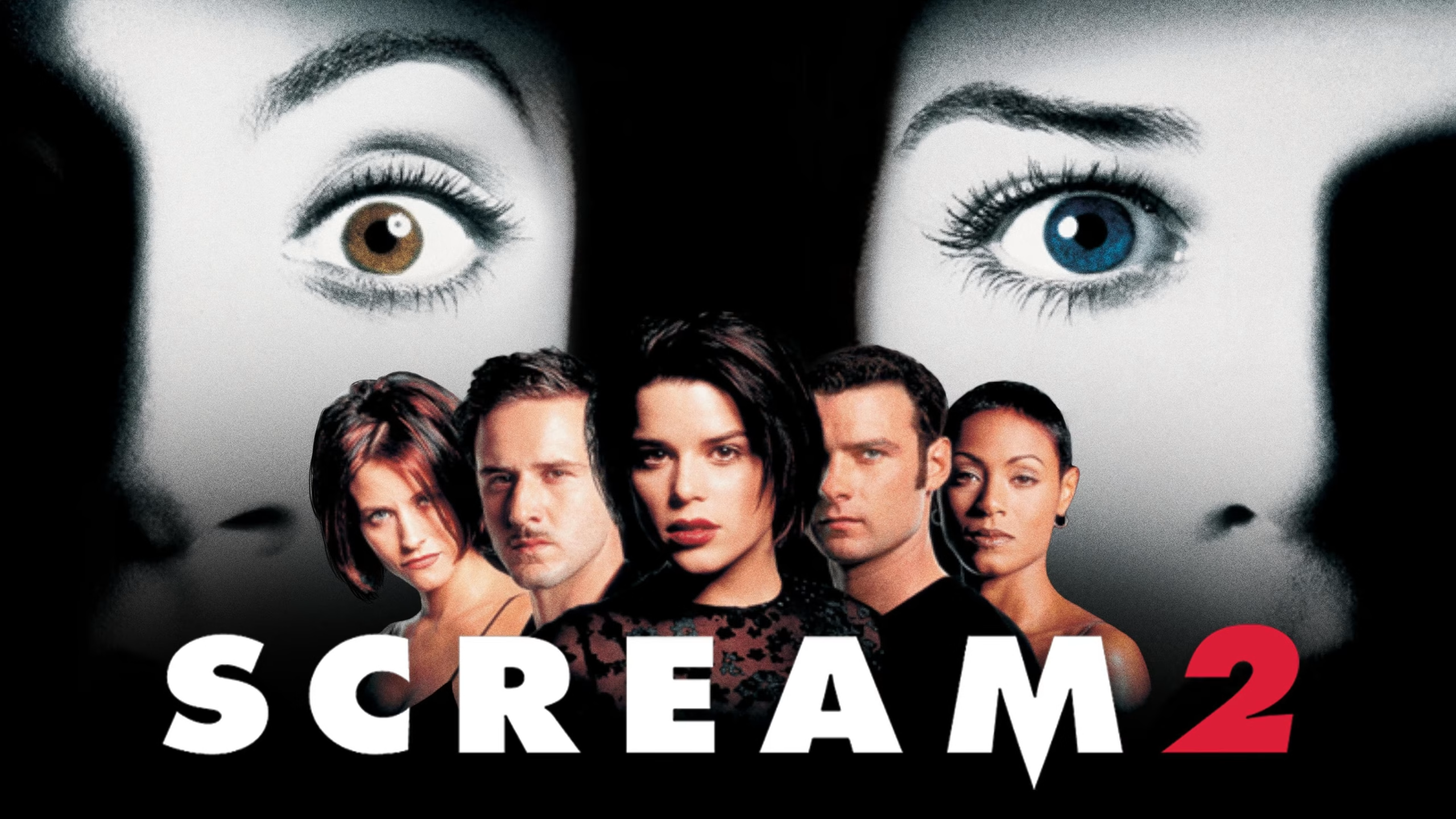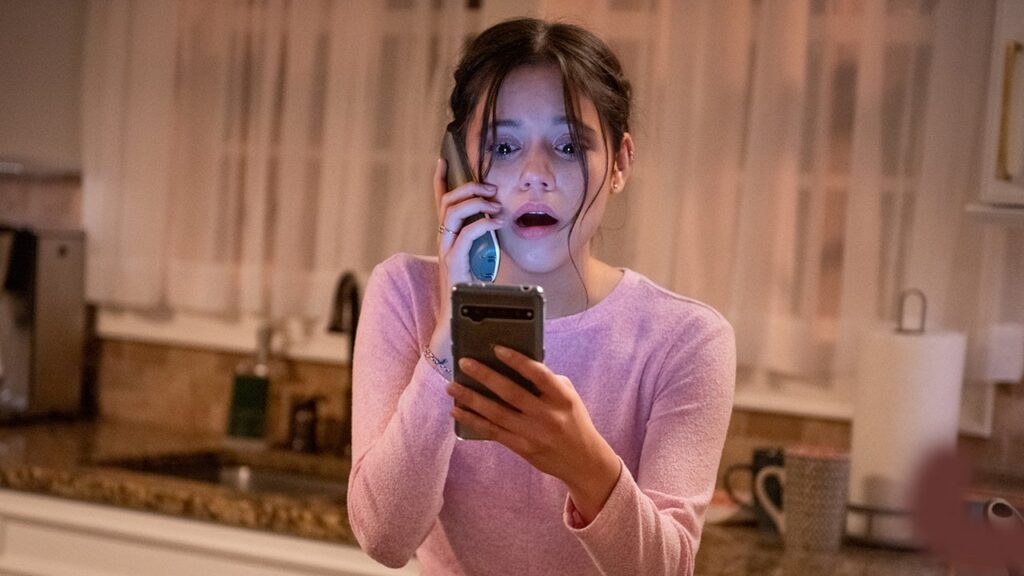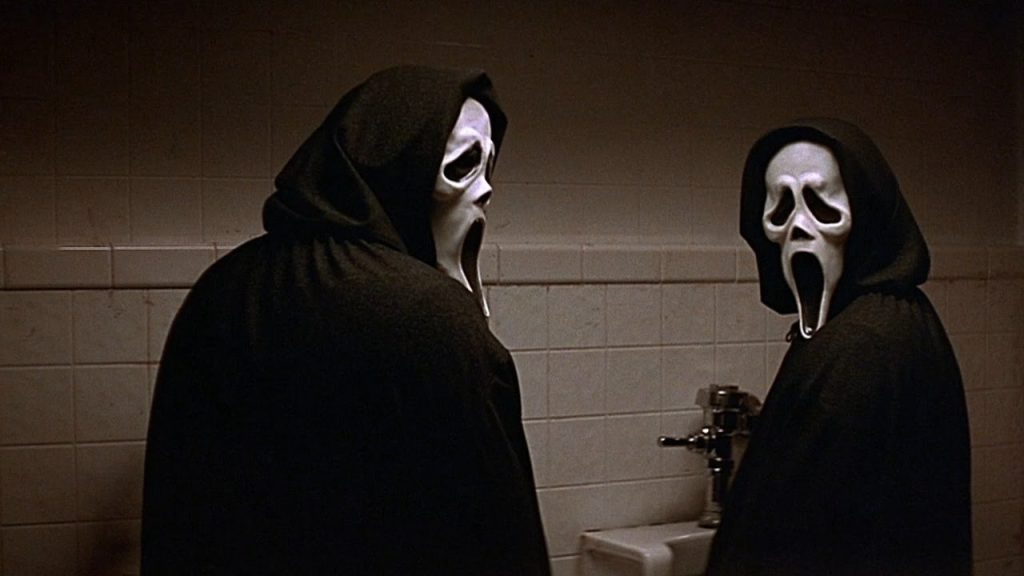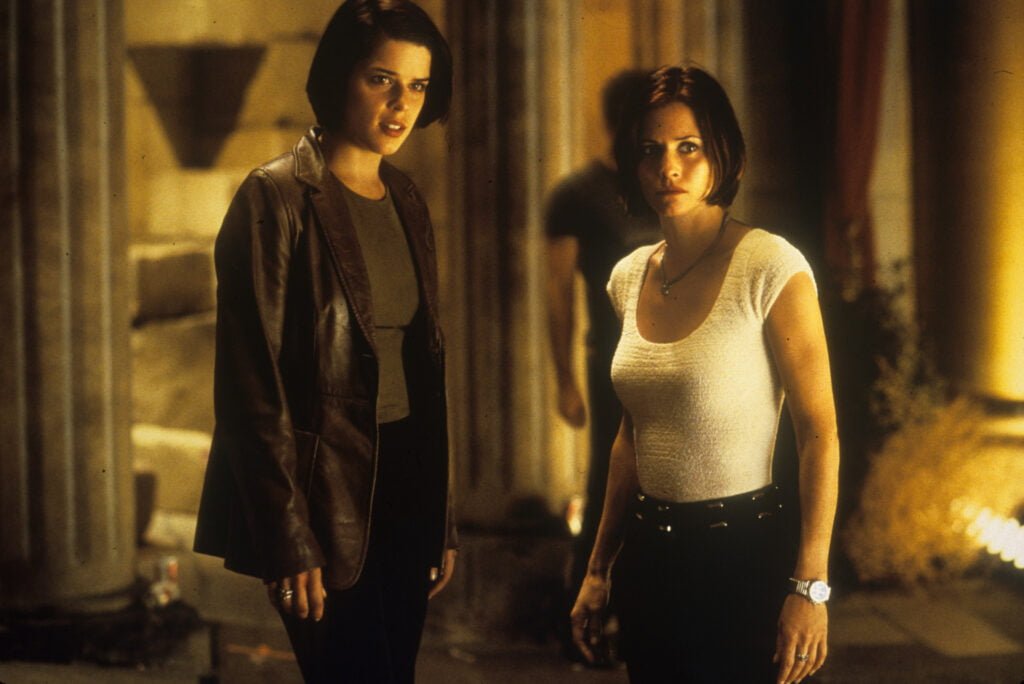Editorials
‘Pet Sematary’ (2019) is Scarier Than You Remember
The Pet Sematary remake brought us something new within a story we knew well. It created a horror we hadn’t gotten from the previous renditions. I am positively bewildered whenever I hear someone say that the remake of Pet Sematary wasn’t scary. As a standalone film, this movie is terrifying, and I am here to remind you why.

Before we begin, I want to preface this by saying that I hold Pet Sematary near and dear to my heart. The novel was the first full-length Stephen King book I ever read and watching the 1989 Pet Sematary movie for the first time with my older sister is a beloved childhood memory that left me scarred in the best possible way. Little gore and scares that stick with you? Little me was invested.
As with all things beloved, when the attempt to remake Pet Sematary was announced, I was equally excited and apprehensive.
I know some people refuse to partake in any excitement about remakes. These same people unknowingly have favorites of their own that are remakes, but I digress. The lengths people will go to downplay a remake, simply because it’s a remake, immediately gives any movie an uphill climb to endeavor. It reminds me of what Mark Twain said: “There is no such thing as a new idea. It is impossible. We simply take a lot of old ideas and put them into a sort of mental kaleidoscope.”
The Pet Sematary remake brought us something new within a story we knew well. It created a horror we hadn’t gotten from the previous renditions. I am positively bewildered whenever I hear someone say that the remake of Pet Sematary wasn’t scary. As a standalone film, this movie is terrifying, and I am here to remind you why.
Everything That Makes Pet Sematary (2019) Worth the Watch
We Don’t Talk About Zelda
There’s something I need to make clear right away. The point of this piece is to advocate for the Pet Sematary remake’s scariness; this is not a comparison piece against the original. That being said, it’s undeniable that the original left large shoes to fill when presenting this nightmare on screen, much of which the movie amounted to successfully. However, Andrew Hubatsek, the actor who played Zelda in 1989’s Pet Sematary, is the only Cinderella who can fill these slippers. As hard as I try to view the film as a standalone piece, this is one point that I cannot remove my expectancy bias. Zelda was the scariest part of 1989’s Pet Sematary, and the remake could not surpass his spectacular performance. There is some beauty in this, though, as the scariest parts of the 2019 Pet Sematary, directed by Kevin Kolsch and Dennis Widmyer, instead all came from the star, as it should.
Why Gage Didn’t Die in Pet Sematary (2019)
One of the biggest gripes we’ve seen about the film is its divergence from King’s material; on that note, I have two points. First, there’s nothing wrong with a horror director bringing the idea of someone else’s horror to life their own way. Dare to be different, so long as the original work is still respected.
Second, these divergences gave us the scariest parts of the movie- scares that were brand new to Pet Sematary lore.
Third, the movie is King-approved. Surprise, I had three points. But back to that second one.
Spoilers from here on out. Both King’s novel and the 1989 film adaptation of Pet Sematary have two-year-old Gage Creed die by the semi-truck that killed seven-year-old Ellie instead in 2019’s Pet Sematary. This change made fans furious for the apparent unnecessary blasphemous change to the plot.
Again, this isn’t a comparison piece, but after Miko Hughes’ performance as Gage Creed in the 1989 film, it would have been hard to see anyone else play that part anyway. Especially given that child labor laws are not the same today as they were in the eighties, that role would be tremendously difficult to pull off today with an actual toddler. Fun fact: Jete Laurence was 12 when Pet Sematary was released, and the role of Gage Creed in this film was played by twins Hugo and Lucas Lavoie.
Through this crucial change to the plot, we can see the perspective of someone who’d been brought back, allowing us to glimpse the darkness brought forth by the Pet Sematary like never before. Gage could only say a few words, so we were given the whole painful perspective for the first time through seven-year-old Ellie.

The Scariest Moments in Pet Sematary (2019)
“It’s only a tangle.”
From the moment Ellie returns from her resting place in the Pet Sematary, the movie is filled with a sense of dread. We know that Judd Crandall means it when he says, “Sometimes dead is better,” and that people don’t come back from the Pet Sematary quite right. This film gives us the added horrific splendor in the fact that Ellie returns in a body that was 1) mangled in a car accident and 2) had already started the process of decomposition after autopsy. (I can’t believe I even need to continue my argument for this film.)
As such, Ellie returns with a look that is evident in all that I previously mentioned. It’s a goreful tidbit I never realized was woefully absent from its predecessor and made every scene with Ellie that much more uncomfortable. There was no looking at her and denying what you were looking at.
Because of the added insight into what an exhumed body might look like, we’re treated to the horrific bathtub scene where Louis Creed brushes his freshly undead daughter’s hair. He hits a snag, prompting her to ask in her little, evil, woodsy voice, “What was that?”
“It’s only a tangle,” he says, as he reveals he’d snagged onto staples in the back of her head. (You know, from where they had to staple her head back together after she died? Yikes)
That’s far from the only horrific incident with Jete Laurence’s little she-demon, as Louis Creed lays in bed next to his daughter, who can’t sleep, and as she lay, quietly seething, she proclaims:
“I can hear the woods.”
A quick aside to mention that Jason Clarke’s role as the grief-stricken Louis Creed was so well done. He perfectly encapsulated this place between “I’m happy I brought my daughter back” and “Dear god, what have I done?”
These polarizing viewpoints on existence are thematic in the film, as we see Ellie go through her own crises, as she exists as a little girl, but something else entirely simultaneously. This junction is made clear by her dancing scene the morning after she comes back. Ellie’s changed back into the clothes she was buried in, twirling around like a ballerina, but with a vicious, malicious undertone growing in apparency until she smashes up the room. Ellie is the little girl she once was who loved to dance, but it’s all tainted with a growing darkness now.
Likewise, Rachel Creed is in her own existential crux, as she actively tries to avoid death due to her childhood trauma just to have it hit her right in her worst nightmare by losing her daughter (and subsequently being murdered by her).
Victor Pascal is also split between states of being. He exists in a limbo where his sole mission has been stopping Louis Creed from succumbing to the call of the Pet Sematary. Ironically, he more than likely perpetuates the spread of evil, as his messages alert Rachel to return to the house, securing her and Gage’s begotten fates. But I digress.
The dancing scene gets a lot of hate, but frankly, I’m obsessed with it because it hammers in these existential contrasts. These conflicts we see experienced by everyone on screen make these people all the more “real”, and the horrors they experience more palpable. Pet Sematary has always been a scary thought for parents in general, because at its heart, it investigates the wild recesses humans will explore when faced with every parent’s worst nightmare. The Pet Sematary remake leaned hard into this core issue, and as such, served us the same horror that made Stephen King’s story great in the first place.

An Unwarranted Hatred for a Legit Scary Movie
Overall, Pet Sematary (2019) is a remarkable scary movie and doesn’t deserve half the hate it gets. Undead Ellie was pure nightmare fuel through and through, and I’m bewildered how anyone else could say otherwise.
Is Pet Sematary (2019), in fact, trash? Is Undead Ellie not scary at all?
First, stop lying to yourself. Then, feel free to vent all your Pet Sematary-related frustrations to the Horror Press Instagram account. I won’t receive your messages, but I’m sure our Editor-In-Chief, Curator of All Things Horror Press, James-Michael Fleites, will happily pass them along to me if you remember to give us a follow while you’re there. Of course, you can always stop by to spread love, too, but do people go out of their way to do that?
Editorials
‘The Woman in Black’ Remake Is Better Than The Original

As a horror fan, I tend to think about remakes a lot. Not why they are made, necessarily. That answer is pretty clear: money. But something closer to “if they have to be made, how can they be made well?” It’s rare to find a remake that is generally considered to be better than the original. However, there are plenty that have been deemed to be valuable in a different way. You can find these in basically all subgenres. Sci-fi, for instance (The Thing, The Blob). Zombies (Dawn of the Dead, Evil Dead). Even slashers (The Texas Chainsaw Massacre, My Bloody Valentine). However, when it comes to haunted house remakes, only The Woman in Black truly stands out, and it is shockingly underrated. Even more intriguingly, it is demonstrably better than the original movie.
The Original Haunted House Movie Is Almost Always Better
Now please note, I’m specifically talking about movies with haunted houses, rather than ghost movies in general. We wouldn’t want to be bringing The Ring into this conversation. That’s not fair to anyone.
Plenty of haunted house movies are minted classics, and as such, the subgenre has gotten its fair share of remakes. These are, almost unilaterally, some of the most-panned movies in a format that attracts bad reviews like honey attracts flies.
You’ve got 2005’s The Amityville Horror (a CGI-heavy slog briefly buoyed by a shirtless, possessed Ryan Reynolds). That same year’s Dark Water (one of many inert remakes of Asian horror films to come from that era). 1999’s The House on Haunted Hill (a manic, incoherent effort that millennial nostalgia has perhaps been too kind to). That same year there was The Haunting (a manic, incoherent effort that didn’t even earn nostalgia in the first place). And 2015’s Poltergeist (Remember this movie? Don’t you wish you didn’t?). And while I could accept arguments about 2001’s THIR13EN Ghosts, it’s hard to compete with a William Castle classic.
The Problem with Haunted House Remakes
Generally, I think haunted house remakes fail so often because of remakes’ compulsive obsession with updating the material. They throw in state-of-the-art special effects, the hottest stars of the era, and big set piece action sequences. Like, did House on Haunted Hill need to open with that weird roller coaster scene? Of course it didn’t.
However, when it comes to haunted house movies, bigger does not always mean better. They tend to be at their best when they are about ordinary people experiencing heightened versions of normal domestic fears. Bumps in the night, unexplained shadows, and the like. Maybe even some glowing eyes or a floating child. That’s all fine and dandy. But once you have a giant stone lion decapitating Owen Wilson, things have perhaps gone a bit off the rails.

The One Big Exception is The Woman in Black
The one undeniable exception to the haunted house remake rule is 2012’s The Woman in Black. If we want to split hairs, it’s technically the second adaptation of the Susan Hill novel of the same name. But The Haunting was technically a Shirley Jackson re-adaptation, and that still counts as a remake, so this does too.
The novel follows a young solicitor being haunted when handling a client’s estate at the secluded Eel Marsh House. The property was first adapted into a 1989 TV movie starring Adrian Rawlings, and it was ripe for a remake. In spite of having at least one majorly eerie scene, the 1989 movie is in fact too simple and small-scale. It is too invested in the humdrum realities of country life to have much time to be scary. Plus, it boasts a small screen budget and a distinctly “British television” sense of production design. Eel Marsh basically looks like any old English house, with whitewashed walls and a bland exterior.
Therefore, the “bigger is better” mentality of horror remakes took The Woman in Black to the exact level it needed.

The Woman in Black 2012 Makes Some Great Choices
2012’s The Woman in Black deserves an enormous amount of credit for carrying the remake mantle superbly well. By following a more sedate original, it reaches the exact pitch it needs in order to craft a perfect haunted house story. Most appropriately, the design of Eel Marsh House and its environs are gloriously excessive. While they don’t stretch the bounds of reality into sheer impossibility, they completely turn the original movie on its head.
Eel Marsh is now, as it should be, a decaying, rambling pile where every corner might hide deadly secrets. It’d be scary even if there wasn’t a ghost inside it, if only because it might contain copious black mold. Then you add the marshy grounds choked in horror movie fog. And then there’s the winding, muddy road that gets lost in the tide and feels downright purgatorial. Finally, you have a proper damn setting for a haunted house movie that plumbs the wicked secrets of the wealthy.
Why The Woman in Black Remake Is an Underrated Horror Gem
While 2012’s The Woman in Black is certainly underrated as a remake, I think it is even more underrated as a haunted house movie. For one thing, it is one of the best examples of the pre-Conjuring jump-scare horror movie done right. And if you’ve read my work for any amount of time, you know how positively I feel about jump scares. The Woman in Black offers a delectable combo platter of shocks designed to keep you on your toes. For example, there are plenty of patient shots that wait for you to notice the creepy thing in the background. But there are also a number of short sharp shocks that remain tremendously effective.
That is not to say that the movie is perfect. They did slightly overstep with their “bigger is better” move to cast Daniel Radcliffe in the lead role. It was a big swing making his first post-Potter role that of a single father with a four-year-old kid. It’s a bit much to have asked 2012 audiences to swallow, though it reads slightly better so many years later.
However, despite its flaws, The Woman in Black remake is demonstrably better than the original. In nearly every conceivable way. It’s pure Hammer Films confection, as opposed to a television drama without an ounce of oomph.
Editorials
Is ‘Scream 2’ Still the Worst of the Series?

There are only so many times I can get away with burying the lede with an editorial headline before someone throws a rock at me. It may or may not be justified when they do. This article is not an attempt at ragebaiting Scream fans, I promise. Neither was my Scream 3 article, which I’m still completely right about.
I do firmly believe that Scream 2 is, at the very least, the last Scream film I’d want to watch. But what was initially just me complaining about a film that I disregard as the weakest entry in its series has since developed into trying to address what it does right. You’ve heard of the expression “jack of all trades, master of none”, and to me Scream 2 really was the jack of all trades of the franchise for the longest time.
It technically has everything a Scream movie needs. Its opening is great, but it’s not the best of them by a long shot. Its killers are unexpected, but not particularly interesting, feeling flat and one-dimensional compared to the others. It has kills, but only a few of them are particularly shocking or well executed. It pokes fun at the genre but doesn’t say anything particularly bold in terms of commentary. Having everything a Scream movie needs is the bare minimum to me.
But the question is, what does Scream 2 do best exactly? Finding that answer involves highlighting what each of the other sequels are great at, and trying to pick out what Scream 2 has that the others don’t.

Scream 3 Is the Big Finale That Utilizes Its Setting Perfectly
Scream as a series handily dodges the trap most horror franchises fall into: rehashing and retreading the same territory over and over. That’s because every one of its films are in essence trying to do something a little different and a little bolder.
Scream 3 is especially bold because it was conceived, written, and executed as the final installment in the Scream series. And it does that incredibly well. Taking the action away from a locale similar to Woodsboro, Scream 3 tosses our characters into the frying pan of a Hollywood film production. Despite its notorious number of rewrites and script changes (one of which resulted in our first solo Ghostface), it still manages to be a perfect culmination of Sidney Prescott’s story.
I won’t repeat myself too much (go read my previous article on the subject), but 3 is often maligned for as good a film as it turned out to be. And for all of its clunkier reveals, and its ghost mom antics, it understands how to utilize its setting and send its characters off into the sunset right.
Scream 4’s Meta Commentary Wakes Scream from a Deep Sleep
As Wes Craven’s final film, Scream 4 has a very special place in the franchise. It was and still is largely adored for bringing back the franchise from a deep 11-year sleep. With one of the craziest openings in any horror film, let alone a Scream film, it sets the tone for a bombastic return and pays off in spades with the journey it takes us on.
Its primary Ghostface Jill Roberts is a fan favorite, and for some people, she is the best to ever wear the mask. Its script is the source of many memorable moments, not the least of which is Kirby’s iconic rapid-fire response to the horror remakes question. And most importantly, it makes a bold and surprisingly effective return for our main trio of Sidney, Dewey, and Gale, whose return didn’t feel trite or hammy when they ended up coming back to Woodsboro for more.
Craven’s work on 4 truly understands the power its predecessors had exerted on the horror genre, both irreverent in its metacommentary and celebratory of the Scream series as a whole. The film is less of a love letter to the genre and more of a kicking down of the door to remind people what Scream is about. 4’s story re-established that Scream isn’t going away, no matter how long it takes for another film, and no matter how many franchises try to take its place.

Scream 5 & 6 Is Radio Silence’s Brutal and Bloody Attitude Era
Put simply, Scream 5 and 6’s strong suit was not its characters. It was not its clever writing. The Radio Silence duology in the Scream series excelled in one thing: beating the hell out of its characters.
Wrestling fans (of which there is an unsurprising amount of crossover with horror fans) will know why I call it the Attitude Era. Just like WWE’s most infamous stretch of history, Radio Silence brought something especially aggressive to their entries. And it’s because these films were just brutal. Handing the reins to the series, Bettinelli-Olpin and Gillet gifted a special kineticism to the classic Scream chase sequences, insane finales, and especially its ruthless killers.
All five of the Ghostfaces present in 5 and 6 are the definition of nasty. They’re unrelenting, and in my humble opinion, the freakiest since the original duo of Stu Macher and Billy Loomis. Getting to hear all the air get sucked out of the room as Dewey is gutted like a fish in 5 was still an incredible moment to experience in theatres, and it’s something I don’t think would have happened if the films were any less mean and any less explosively violent.

So, What Does Scream 2 Do Best Exactly?
So now, after looking at all these entries and all of their greatest qualities, what does Scream 2 have that none of the others do? What must I concede to Scream 2?
Really great character development.
Film is a medium of spectacle most of the time, and this is reflected in how we critique and compliment them. It affects how we look back on them, sometimes treating them more harshly than they deserve because they don’t have that visual flash. But for every ounce of spectacle Scream 2 lacks, I have to admit, it does an incredible job of developing Sidney Prescott as a character.
On a rare rewatch, it’s clear Neve Campbell is carrying the entirety of Scream 2 on her back just because of how compelling she makes Sidney. Watching her slowly fight against a tide of paranoia, fear, and distrust of the people around her once more, watching her be plunged back into the nightmare, is undeniably effective.
It’s also where Dewey and Gale are really cemented as a couple, and where the seeds of them always returning to each other are planted. Going from a mutual simmering disrespect to an affectionate couple to inseparable but awkward and in love is just classic; two people who complete each other in how different they are, but are inevitably pulled back and forth by those differences, their bond is one of the major highlights throughout the series.

Maybe All the Scream Films Are Just Good?
These three characters are the heart of the series, long after they’ve been written out. I talk a big game about how Scream 3 is the perfect ending for the franchise, but I like to gloss over the fact that Scream 2 does a lot of the legwork when it comes to developing the characters of Dewey, Gale, and especially Sidney.
Without 2, 3 just isn’t that effective when it comes to giving Sidney her long deserved peace. Without 2, the way we see Sidney’s return in 4 & 5 doesn’t hit as hard. All of the Scream movies owe something to Scream 2 in the same way they owe something to the original Scream. I think I’ve come to a new point of view when it comes to the Scream franchise: maybe there is no bad entry. Maybe none of them have to be the worst. Each one interlinks with the others in their own unique way.
And even though I doubt I will ever really love Scream 2, it has an undeniable strength in its character writing that permeates throughout the whole franchise. And that at the very least keeps it from being the worst Scream film.























